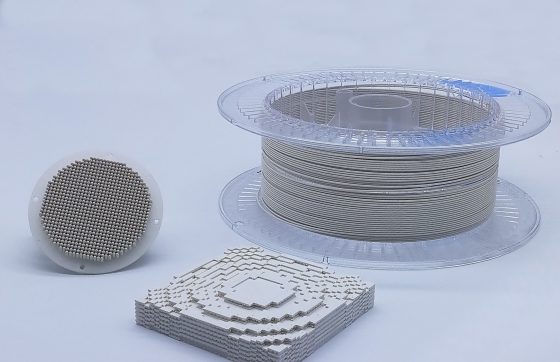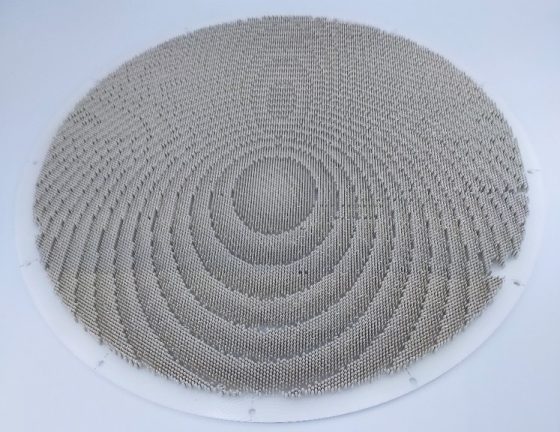In the recent years, several 3D-printed microwave components have been successfully demonstrated, which makes 3D-printing a promising technology for the next generation of antennas and radiofrequency (RF) devices. In order to take the full advantage of 3D-printing for RF applications, new materials with specific dielectric properties need to be developed and mastered.

STORY
In the framework of a collaborative project, MACOY-3D, partly funded by the French Agency of Innovation for Defense, the consortium, with ICMCB, CANOE, Thales Research & Technology and Nanoe, has developed a material with specific properties such as high permittivity and low dielectric losses. From this result, Nanoe has commercially launched the Zetamix Epsilon filaments, dedicated to radiofrequency applications. These filaments feature a high permittivity of 7.5 and a low loss tangent of 0.001. In addition, the Zetamix Epsilon filaments offer a good resistance in temperature with Heat Deflection Temperature (HDT) of 115°C, which allows for operation in environments such as aerospace applications.
BENEFITS
One benefit of using 3D-printing technology is to end up with low-profile RF components as illustrated on the pictures below. The compactness is obtained with 3D-structuration approach: on the left, a conventional RF lens fabricated by machining, and on the right, the same function obtained by 3D-printing.

Based on 3D-printing of Zetamix Epsion filaments, Thales was able to demonstrate a novel efficient and low-profile steerable antenna architecture, which consists of a fixed feeder and two rotatable 28cm-diameter flat dielectric metasurfaces, printed by using Zetamix Epsilon filaments.
Such results of the printed metasufaces with Zetamix Epsilon pave the way for the development of low-cost low-profile components for various radiofrequency applications